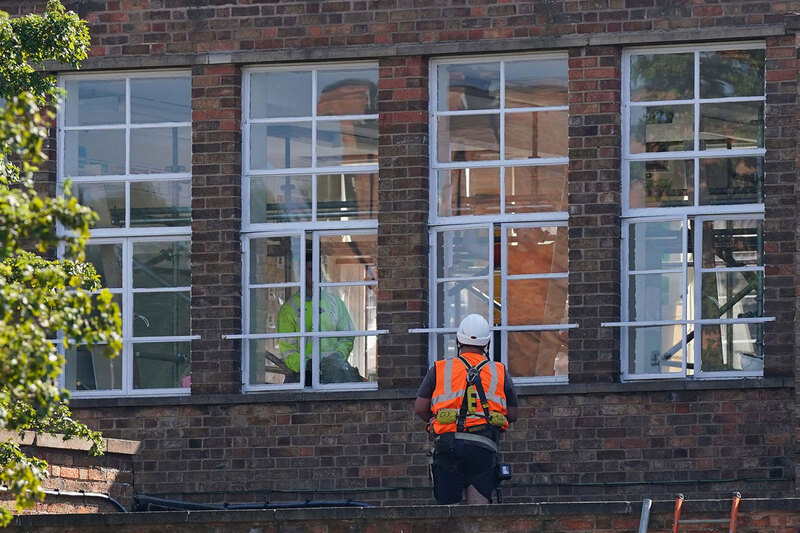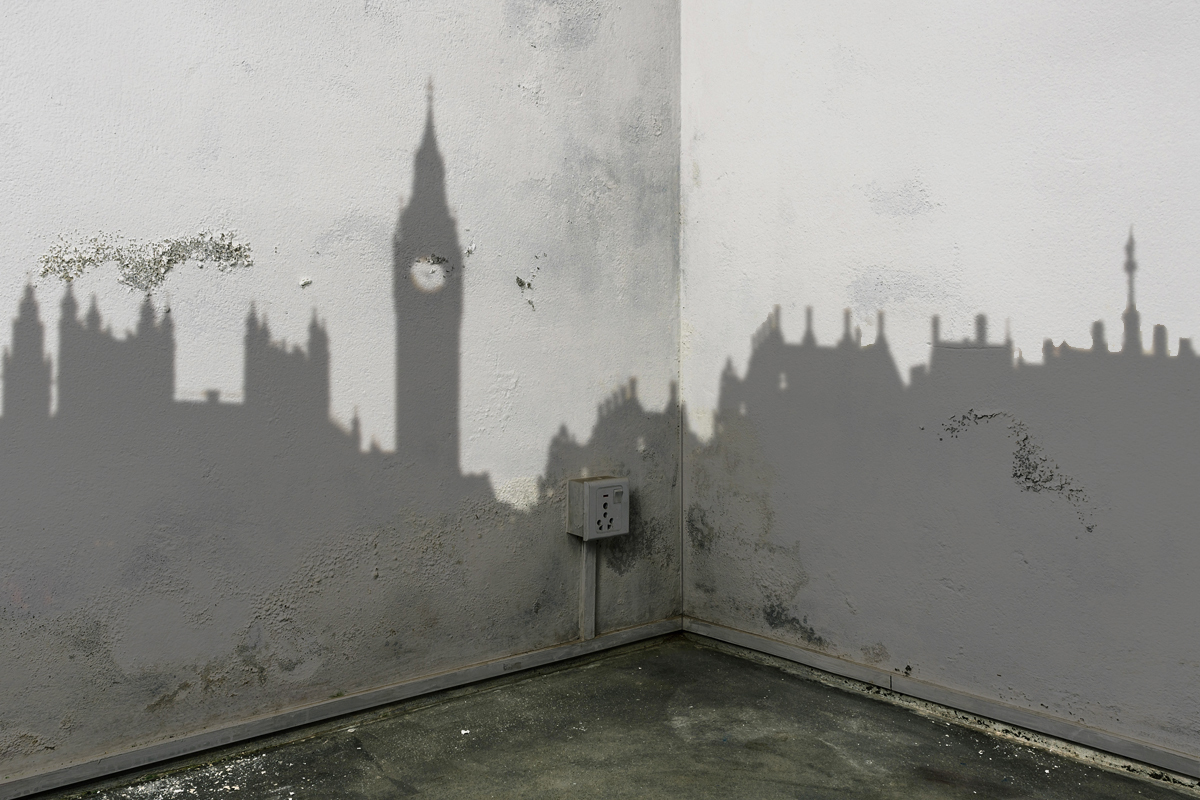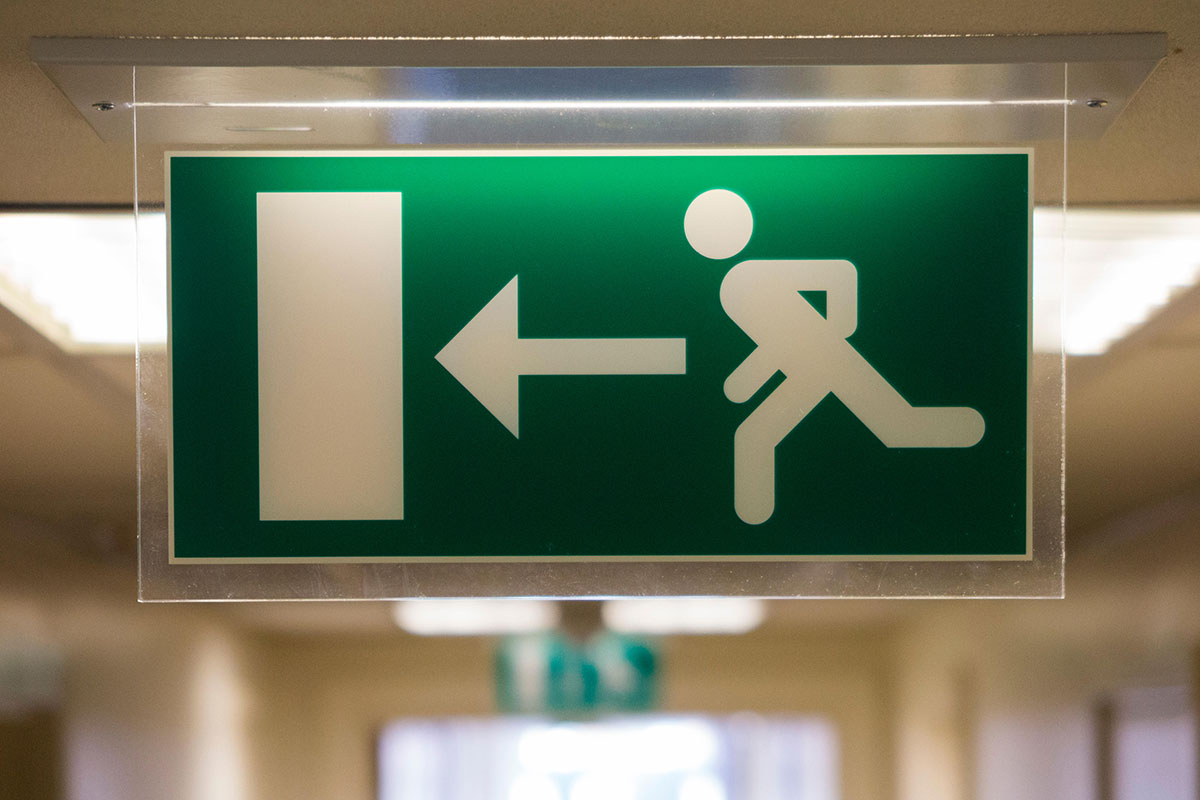No widespread use of RAAC found in social housing
No widespread use of reinforced autoclaved aerated concrete (RAAC) has been found, or is expected to be discovered, in social housing properties as investigations on stock remain ongoing.
The building material was used in the construction sector between the 1950s and the mid-1990s. But it is now known to deteriorate over time and has been found to be a safety risk.
Described as a “bubbly” form of lightweight concrete, RAAC has gathered media attention of late when it was linked to ceilings collapsing in schools.
Over 100 schools with the material have been closed or partly closed while arrangements are made to resolve the issues, after the Department for Education (DfE) updated its guidance on the material. According to the DfE documents, the material is most commonly found as precast panels within flat, or sometimes pitched, roofs, as well as occasionally in floors and walls.
Building owners, including social landlords, are responsible for keeping their properties safe. The Local Government Association has published guidance to its members, while guidance elsewhere can be found from the Institution of Structural Engineers and the Royal Institution of Chartered Surveyors.
The RSH
The Regulator of Social Housing (RSH) said that it believes RAAC is not widespread in the sector.
“We have been engaging with relevant experts and sector stakeholders, and our conversations with them suggest that they believe RAAC is not widespread in social housing,” a spokesperson said.
“However, housing associations and local councils must make sure that the homes they provide are safe.
“We expect social landlords to understand the condition of their buildings, take action where they find problems, and communicate effectively with tenants where necessary. Any social landlord with concerns about RAAC should seek specialist advice.”
In a letter to registered providers, Fiona MacGregor, chief executive of the Regulator of Social Housing (RSH), highlighted that landlords must ensure they have a good understanding of their stock and communicate appropriately with tenants where this is an issue.
Providers should inform the RSH if they identify issues which suggest material non-compliance with any of the regulatory standards, she added.
Ms MacGregor said that while its current understanding is that RAAC is not widespread in social housing, it may be present in a small number of buildings dating from the 1950s to 1980s, particularly in flat-roof and panel structures.
“Ensuring the safety of tenants and residents should be the highest priority for every landlord,” she said in the letter.
“We expect landlords to ensure that they have a good understanding of their homes, including building safety issues and whether homes contain RAAC components and the risk to tenant safety arising from these; that you develop proportionate mitigation and remediation plans where required; and seek suitably qualified advice where necessary.”
Trade bodies
A spokesperson from the National Housing Federation (NHF) said the trade body is discussing the topic with its members and other bodies and stakeholders.
The spokesperson said: “The NHF is working with our members to make sure they have the most up to date advice and guidance on RAAC, and we are in dialogue with government, the Regulator of Social Housing and other stakeholders.”
Paul Price, chief executive of the Association of Retained Council Housing (ARCH), said that its members, which number around 70, have so far found no evidence of RAAC in their properties.
“That’s the picture across the industry at the moment,” he said.
“I wrote to all of our members; all who’ve responded so far have been undertaking surveys and have found no sign of RAAC anywhere.”
Mr Price said ARCH is working with the regulator, the National Housing Federation and the National Federation of ALMOs, to see if they can pull together data on architects or contractors that used RAAC.
He said: “When we’ve got that information together, then we will issue that to our members and say, ‘Go and check any buildings that have been designed by this architect or built by this developer.’ At the moment, we just don’t have that information because we are just not finding it.”
Housing associations’ investigations
Housing providers that have spoken with Social Housing have been investigating the extent of RAAC in their properties and so far have found no evidence of widespread use.
Clarion said it is analysing its stock, but it has not found the presence of RAAC yet.
The UK’s largest housing association has invested £40m on building safety measures over the past year, which included a rolling programme of structural surveys. None of this work has revealed the presence of RAAC in any building owned by Clarion.
“The safety of our residents is our first priority,” a spokesperson said.
“We are undertaking some analysis of our stock with a view to commissioning specialist inspections where needed. However, as per the regulator’s advice, RAAC is not believed to have been widely used in social housing in England.”
David Lewis, executive group director of 107,00-home L&Q, said it is working to identify the use of RAAC, but he believes the risk is low and expects the use of RAAC in its buildings to be “very limited”.
He said: “The safety of our residents is our top priority, so we are working to identify if any blocks may contain RAAC and to undertake appropriate analysis in line with government advice as quickly as possible.
“We want to assure residents that the risk is low. RAAC was primarily used in buildings that require a large, unsupported roof such as in schools or hospitals. We believe that its use in our buildings is likely to be very limited and as such we do not expect many homes to be impacted.”
Grand Union Housing Group said from its data the majority of its 12,400 homes are traditional houses and flats, so the provider does not believe that the issue is widespread for its properties.
A spokesperson said: “However, we take the safety of our customers really seriously, so are currently undertaking an urgent review for our board and will take appropriate steps as required.”
G15 landlord Hyde, which manages around 48,000 homes, said that it inspects the conditions of all its properties via a rolling programme of surveys and in response to the issues highlighted with RAAC is developing a risk assessment process.
This is to understand which buildings, if any, may contain this material.
A Hyde spokesperson said: “We’ll keep residents updated as this work continues. The safety of all our residents in their homes is our number one priority.”
Orbit said that independent experts have completed structural surveys on its high-rise properties and are now carrying out additional checks on the remaining stock built during the period in question.
So far, the 46,500-home social landlord has not found any RAAC in these buildings.
“The safety of customers’ homes is our absolute priority,” a spokesperson said.
Rose Bean, director of assets and sustainability at Abri, said the 40,300-home housing association has been working with specialist concrete surveyors to carry out an accelerated programme of on-site property inspections which will confirm if RAAC is present.
“The safety of our customers is our number one priority,” she said.
“If RAAC is found, we will assess its condition, carry out any remedial work required and adopt a programme of regular inspections to ensure our customers remain safe in their homes.”
The view from lawyers
Lawyers said that building owners, including social landlords, should investigate whether they have RAAC in any of their properties and check their insurance policies to see if remedial works would be covered.
And if RAAC is found, they should seek legal advice to find out if they could pursue claims for the cost of remedial works against those culpable for its use.
Melissa Stanford, senior associate at Bevan Brittan, said: “With any kind of health and safety issue like this, particularly when you’re interacting with members of the public, it’s always advisable to act on the knowledge and the information that you have because that helps support a position of compliance.”
Greg Carter, legal director at Winckworth Sherwood, warned that while current insurance policies may provide such cover now, it is possible that insurers may seek to exclude RAAC in future policies.
He said: “Accordingly, building owners who have a reasonable suspicion that RAAC is present really should not delay. They should check their building policies now, ascertain what they need to do in order to make a proper notification to insurers and then – if needs be – do so before their current policy expires. Inaction is not recommended.”
The Building Safety Act 2022 extended the time in which building owners can bring claims against culpable third parties under the Defective Premises Act (DPA) 1972, for properties constructed within the past 30 years.
However, Mr Carter said that residential buildings constructed over 30 years ago will not have that benefit and owners will most likely struggle to pursue claims against culpable third parties for these properties.
He said: “Even where residential building owners are ‘in time’ for bringing a DPA claim, they will likely face a number of hurdles, which may in practice make pursuing successful claims difficult.
“Given the passage of time, any culpable parties may well no longer be around. Even where they are, probable defences might include reference to RAAC’s limited lifespan. The typical lifespan of RAAC planks for instance is only around 30 years.”
Andrew Lancaster, partner at Anthony Collins, said there is a “whole raft of statutory and regulatory obligations” on social housing providers to keep their properties safe, so they must have a plan to satisfy themselves as to whether they have any RAAC in any of the properties they are responsible for.
He said: “I think that organisations need to take the experience that they have gained over the years in addressing fire safety issues and use that and build on that in addressing this new problem.”
Sign up for Social Housing’s weekly news bulletin
Social Housing’s weekly news bulletin delivers the latest news and insight across finance and funding, regulation and governance, policy and strategy, straight to your inbox. Meanwhile, news alerts bring you the biggest stories as they land.
Already have an account? Click here to manage your newsletters.
RELATED









